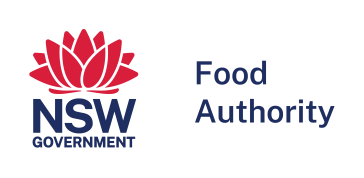- Print this page
- Download as PDF
- Share this page
Raw poultry and meat may contain harmful bacteria including salmonella, listeria, campylobacter and E. coli that can cause food poisoning.
Fortunately, correct cooking and commonsense handling will destroy these micro-organisms and prevent them spreading.
Keep raw meat & poultry away from ready-to-eat foods
Bacteria can spread if raw meat and poultry touches (or drips onto) ready-to-eat foods. This is dangerous as the ready-to-eat foods such as salad vegetables, often receive no further cooking and the bacteria are not killed.
- Wash your hands in hot soapy water and dry thoroughly before preparing food and after touching raw meat and chicken.
- Make sure juices from raw meat and poultry do not come into contact with other foods.
- Thoroughly clean all utensils, equipment and surfaces after preparing raw meat and poultry before contact with other foods. If possible use a separate cutting board specifically for raw meat and chicken.
- Store raw meat and chicken at the bottom of the fridge so it can’t drip onto other foods.
- There is no need to wash whole poultry under water before cooking.
Temperature control
The bacteria that commonly cause food poisoning grow rapidly between 5oC and 60oC. This is commonly referred to as the "temperature danger zone". To keep raw meat and poultry safe:
Refrigerate raw meat and poultry promptly. Don’t leave it on the bench top at room temperature.
Keep raw meat and poultry in a fridge, freezer or esky, below 5oC until you are ready to cook it.
Never leave cooked meals at room temperature for longer than 2 hours. Keep hot food in an oven or on a stove, above 60oC until you are ready to serve. If not eaten within 2 hours cooked meals should be refrigerated.
Cook food properly
- Make sure minced meat and poultry is cooked thoroughly. Cook poultry, minced meats, and sausages until well done, right through to the centre. No pink should be visible. Juices should run clear after cooking.
- Whole pieces of red meat, such as steak, can be cooked to taste.
- Refrigerate leftovers as soon as possible, within 2 hours. If reheating leftovers reheat to steaming hot.
Defrost with care
Freeze raw meat and chicken if it will not be used within 2 days. Never defrost meat or poultry at room temperature on the bench top.
The NSW Food Authority recommends 3 ways to defrost chicken and red meat - in the refrigerator, cold water or the microwave.
It's best to plan ahead for slow, safe thawing in the refrigerator.
- Boneless chicken breasts will usually defrost overnight. Whole chickens might take one to two days or longer. Once defrosted, meat and poultry can be kept in the refrigerator an additional day before cooking.
Meat can also be defrosted in cold water in its airtight packaging or in a leak proof bag.
- Submerge meat or bird, or cut-up parts in cold water, making sure to change the water every 30 minutes to ensure it stays cold. A whole (1.5 to 2 kg) package or parts should defrost in 2 to 3 hours.
Meat and poultry defrosted in the microwave should be cooked immediately after thawing because some areas might become warm and begin to cook during microwaving. Storing partially cooked meat or chicken is not recommended because any bacteria present would not have been destroyed.
